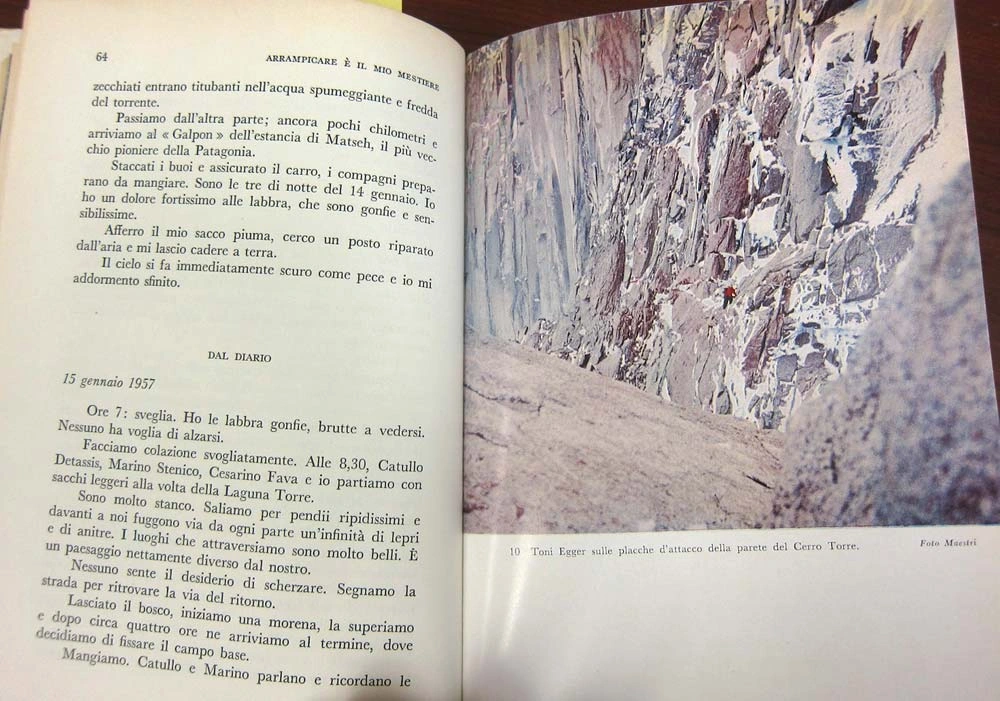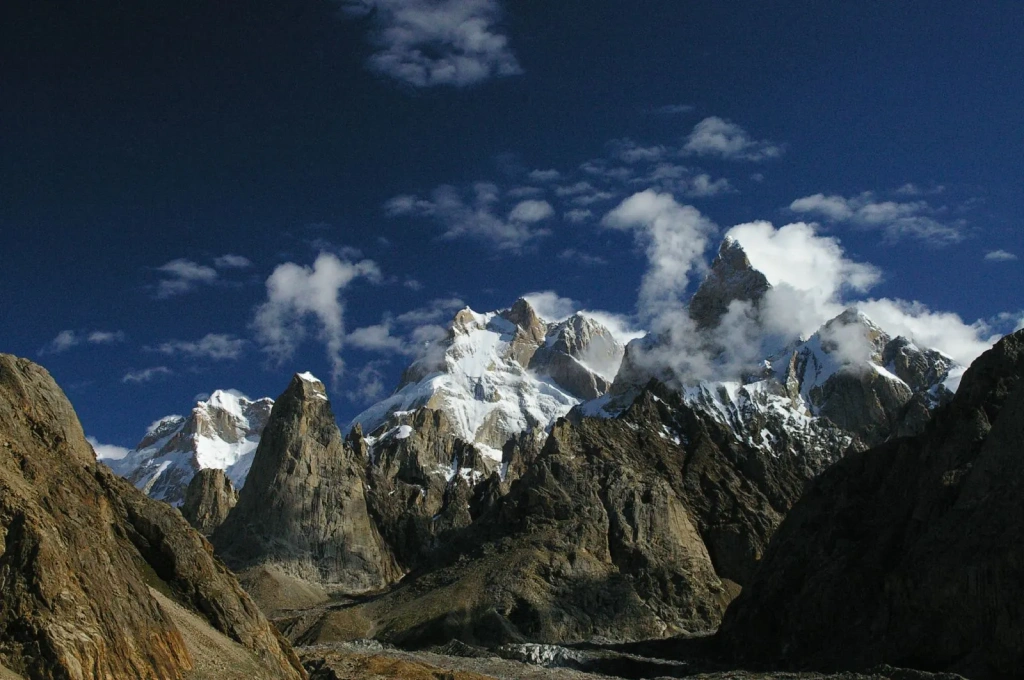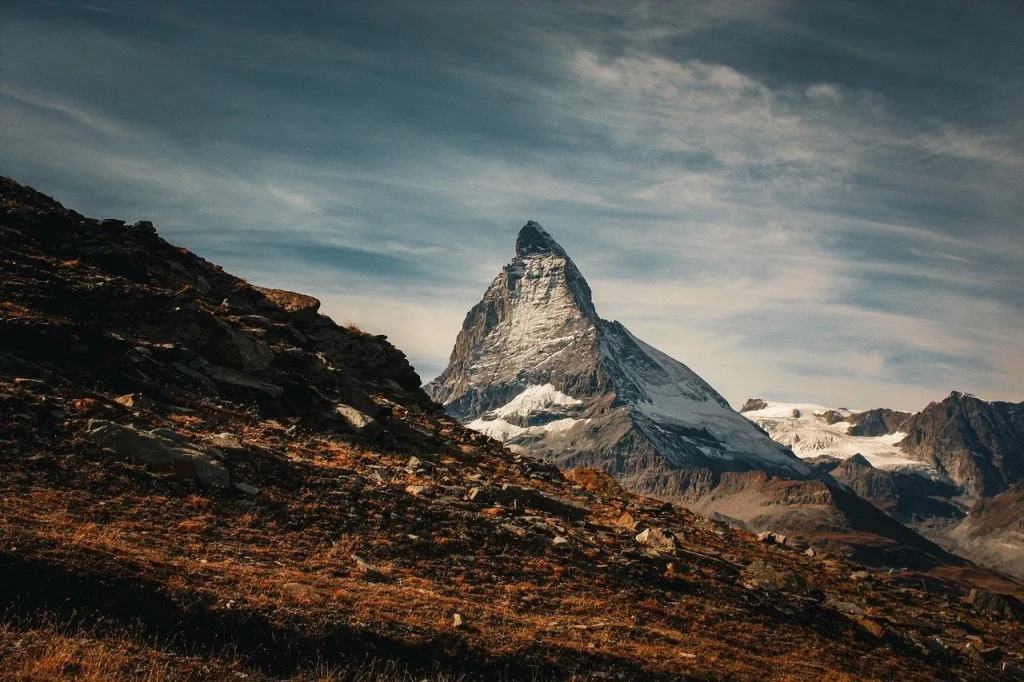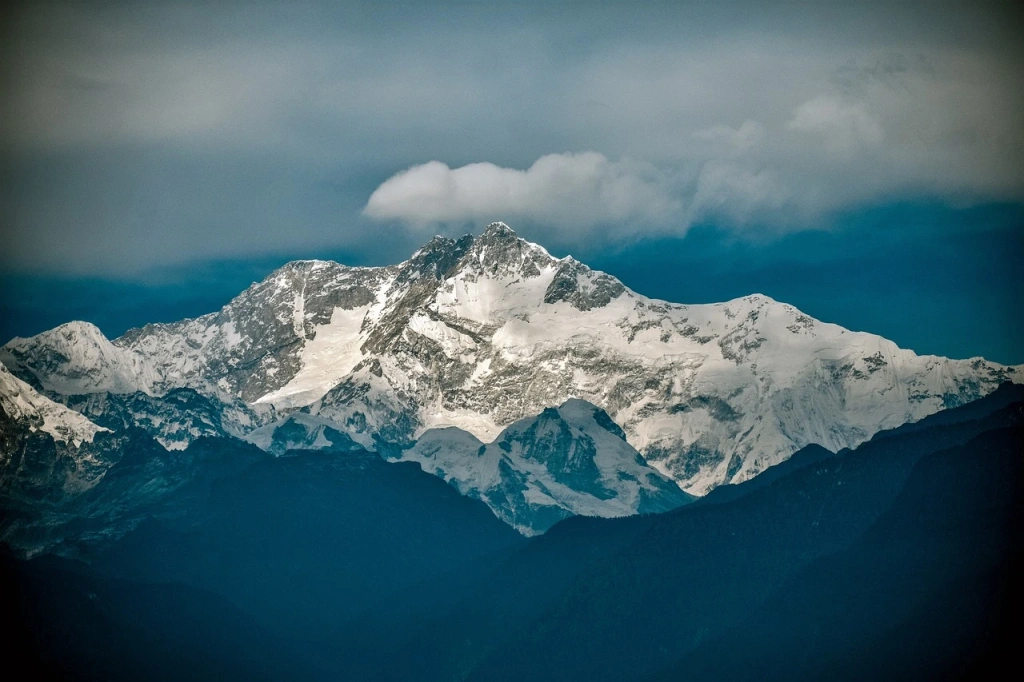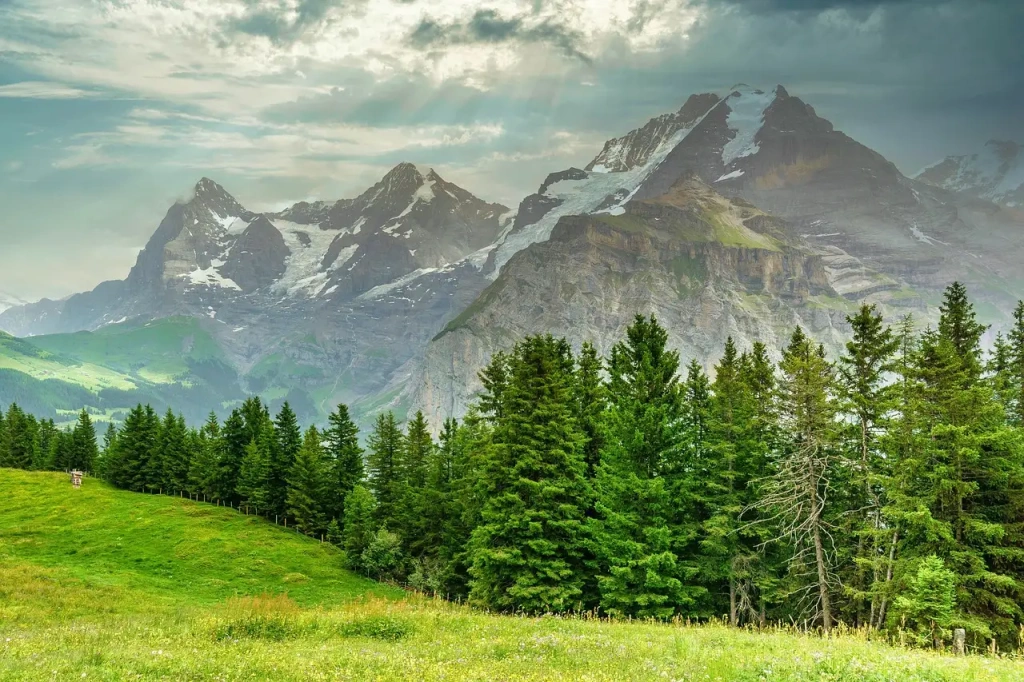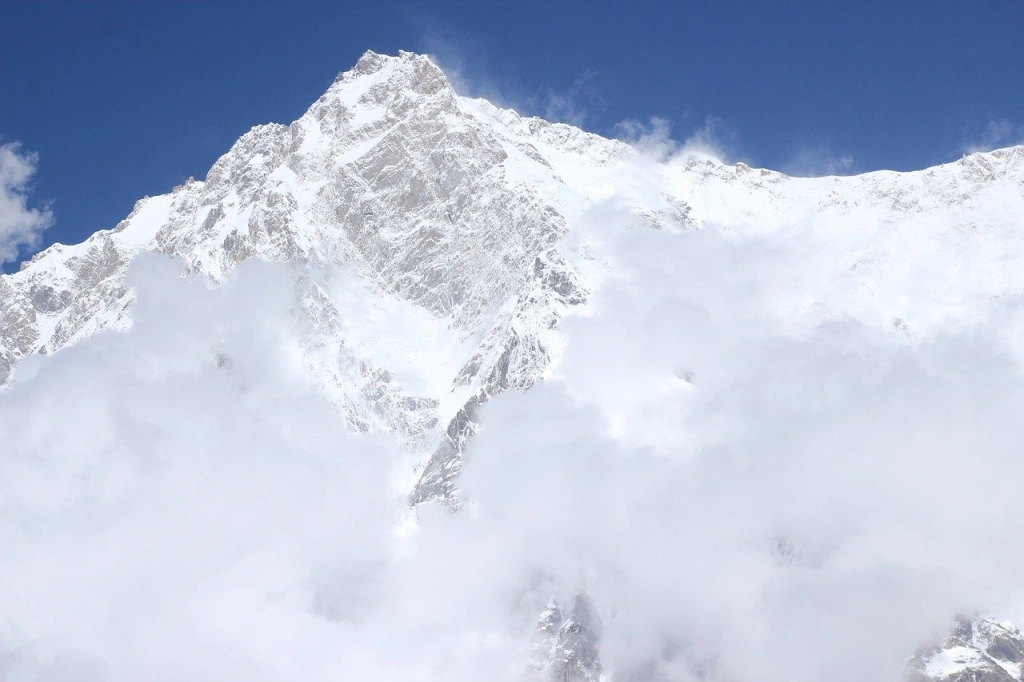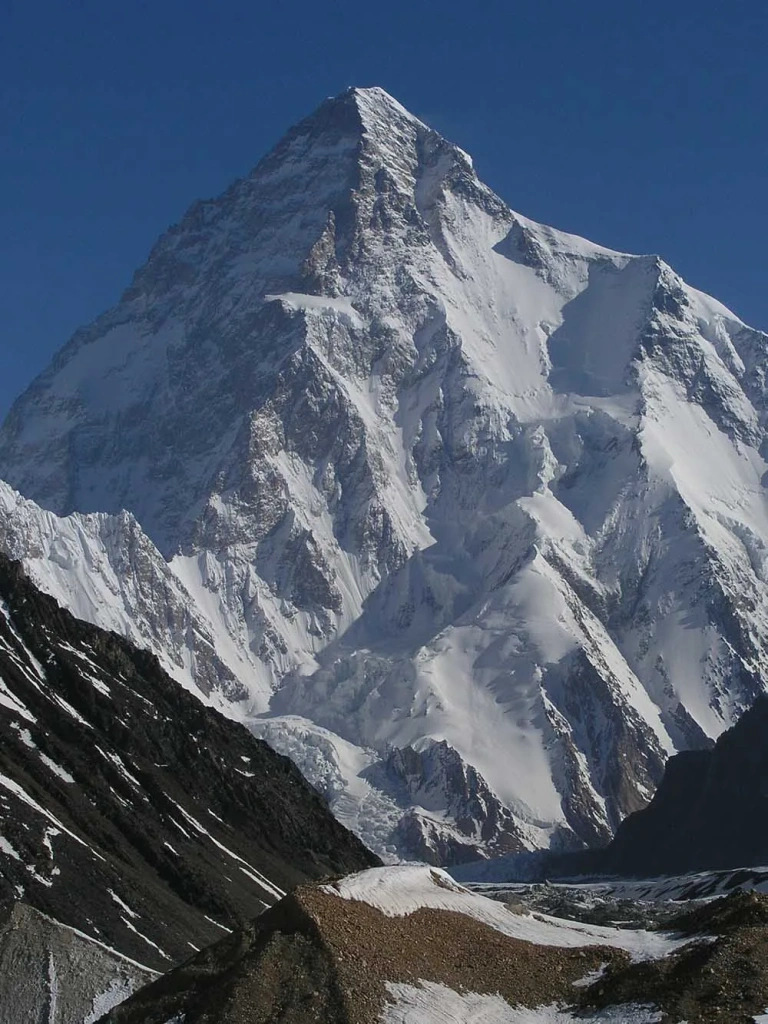High, seemingly impregnable rocky mountains with snowy peaks inspire awe in tourists and a mix of excitement and fear in professional climbers. They know what lies ahead—weeks and even months of climbing up the slope at the limit of human capabilities with a high risk to life. And all for a few coveted minutes at one of the highest and nearly inaccessible points on the planet.
Spoiler: the list is not topped by Mount Everest. It is the highest but far from the most difficult and dangerous mountain. Looking at the percentage of deaths to successful summits, the chances of conquering Mount Everest are much higher than some other mountains on our list.
What makes a mountain the hardest and most dangerous to climb?
This measure is tied to many factors. It is not always the highest, most remote, or steepest. Sometimes it’s the opposite: logistical accessibility, popularity among tourists combined with apparent safety and ease of ascent lead to higher mortality rates. Conversely, tackling some formidable giants from the “Seven Summits” like climbing Mount Kilimanjaro (5,895 meters; 19,341 ft) has almost zero mortality rates and nearly 100% summit success.
Natural geography and weather conditions
Coastal mountains combined with extreme latitude are characterized by unpredictable weather. Rain, thunderstorms, and storm winds can turn a technically easy climb into a dangerous expedition at any moment.
The choice of the route also plays an important role. On the north side of the Eiger, for example, there is almost no sun, while the infamous Rupal side of Nanga Parbat gives climbers the advantage of warmth and the ability to dry clothes and equipment.
Absolute height and slope
Some mountains have features that require heavy technical climbing at high altitudes. A large rock wall located low can be quite manageable, but at 8,000 meters (26,247 ft), it becomes an insurmountable task.
The slope level is also crucial. A steep route or mountain, regardless of its height, significantly increases the time of ascent, physical effort, and risk. A prime example is the “longest mile on Earth” — the last 300 meters (984 ft) before Everest’s summit.
Infrastructure
Mountains with a clear, predictable route differ greatly in complexity from those requiring advanced technical climbing skills. For instance, climbing Baintha Brakk and Cerro Torre [spoiler alert] requires advanced mixed climbing skills, including ice climbing, big wall climbing, and aid climbing.
What are the hardest and most dangerous mountains to climb in the world? Our Top 12.
12. Mount Washington
It may seem surprising that a mountain standing 1,916 meters (6,286 ft) tall could make it onto the list of the most difficult and dangerous in the world. But it can. This mountain which at first glance looks like a large hill has claimed more lives than many other much taller and more formidable peaks.
Mount Washington is located in New Hampshire, USA. Known for hurricane-force winds, sudden weather changes, and summer ice pellets, it has claimed over 150 lives since 1849 (the start of record-keeping). Often, deaths are due to the casual attitude of tourists who are unprepared for weather changes. Nicholas Howe, author of “Not Without Peril: 150 Years of Misadventure on the Presidential Range of New Hampshire,” notes that people often “don’t understand the difference in weather between Boston and the mountains.”
The summit temperature can drop to nearly -50°C (-58°F). More interestingly, it held the world record for the highest wind speed — 372 km/h (231 mph) — from 1934 to 1996. According to the Mount Washington Avalanche Center, about 25 rescue operations are conducted annually. And this is despite the fact that tourists can reach the summit by cable car.
11. Cerro Torre
The relatively small mountain in Argentina, Cerro Torre, is a tower of ice-covered rocks rising to the sky at 3,128 meters (10,262 ft). Thanks to its menacing architecture, it is rightly considered one of the most challenging on Earth.
Climbers attempting to ascend Cerro Torre must navigate vertical and overhanging sections, switching between regular rock climbing and ice climbing in a short weather window. Due to the coastal climate of Southern Patagonia, strong winds and sudden storms can last for several days.
Mortality on the mountain is only documented in a few private cases. There are no reliable statistics for Cerro Torre. Instead, attention is drawn to the mystery of the first ascent to the summit.
In 1959, Italian climber Cesare Maestri claimed to have successfully climbed the mountain. However, his companion Toni Egger, according to him, fell and died during the descent, along with the camera that contained evidence of their successful expedition. Many did not believe Maestri's story, and subsequent unsuccessful attempts to conquer Cerro Torre, ending in new casualties, only reinforced doubts. Later, Egger’s body was discovered, but no camera was found with him.
In 2015, professional climber and mountain guide Rolando Garibotti studied the photograph taken by Maestri during that expedition. The Italian claimed that the photo showed Toni Egger “climbing the lower slabs of Cerro Torre.” Garibotti discovered that the photo was actually taken on the opposite side of the massif. Even if they were just trying to find an easier route to the summit in that place, the photo contradicts Maestri’s previous accounts. Nonetheless, debates on this topic continue to this day.
10. Baintha Brakk
Now our attention shifts to Pakistan, Mount Baintha Brakk at an altitude of 7,285 meters (23,904 ft). It justifies its place in the list of the most difficult and dangerous not by the number of deaths, not by the stories of experienced climbers, and not even by its intimidating name "Man-Eater". The peak is infamous for its most challenging routes and the fact that it has been conquered only three times.
The first successful ascent was in 1971. On the way back, one of the first climbers, Doug Scott, broke both legs, and his companion, Chris Bonington, broke two ribs and got pneumonia. Nevertheless, they managed to reach the base camp during a strong storm and returned home alive.
Climbers managed to repeat their success only in 2001. The third and latest ascent was in 2012. More than twenty other expeditions were unsuccessful. Although the “Ogre” does not have the reputation of a place where many people die, even the best climbers in the world look at this mountain with great respect.
It represents a formidable granite tower with steep slopes, challenging ascents, and unpredictable storms at high altitudes. Even the most optimal route is a real battle for survival.
9. Matterhorn
We now travel to the Swiss-Italian border, to the base of the most famous Alpine peak standing at 4,478 meters (14,692 ft). The Matterhorn is a striking example of how a mountain that is not the most technically challenging can become one of the most dangerous due to easy access to high altitudes and a large number of inexperienced climbers.
The first ascent of this mountain was made back in 1865. Since then, about 600 deaths have been registered here as climbers attempted to repeat that triumph. Nevertheless, thousands of tourists set out on the Matterhorn’s routes each year, provoking new accidents with their carelessness.
According to Zermatt (the management of the eponymous Swiss tourist resort), an average of six people die on the mountain annually. Other estimates put this number as high as 12. During the summer, about 40 rescue operations are conducted. Apart from human factors, the danger of the mountain is explained by rapid weather changes, storms, a high risk of avalanches, and falling rocks.
8. Mount Everest
Given its broad renown, one might assume that Everest, also known as Chomolungma, Sagarmatha, and the "Roof of the World," should top the list of the extremely difficult and most dangerous mountains. But that’s not entirely true.
The Himalayan giant, straddling the border of Nepal and China, holds the status of the highest mountain above sea level at 8,848 meters (29,029 ft). Yet, considering the ratio of successful climbs to fatal outcomes, the current mortality rate ranges from 1% to 3.29%. The latter figure was reported by the analytical agency Statista in May 2023. However, it wasn't always this way.
As American climber Alan Arnette, who has summited Everest four times, writes in his blog, from 1922 to 1999, the mortality rate was 14.5%. It dropped to its lowest levels only from 2000 to 2023. According to the Himalayan Database, by January 2024, 6,664 people have reached Everest’s summit, and 327 have died on its slopes.
Approximately 59% of deaths on the mountain are due to avalanches, ice falls, winter storms, and falls from heights. The remaining 41% are less straightforward. Here, altitude sickness, frostbite, respiratory failure, cardiac arrest, and other consequences of being in extremely harsh conditions come into play. The exact causes and circumstances of many climbers' deaths remain unknown, Everest being the sole witness.
Recently, there has been a noted increase in accidents due to the rising number of climbers. Experienced guides admit that Everest’s distinctive character has faded with the mountain’s commercialization. What was once an achievement for the few has become an option for many, as tourist companies offer paid services even to relatively inexperienced climbers. One can hire not only guides but also porters to carry backpacks, cook food, and monitor tourists’ health. Nonetheless, the vast majority still fall short.
Despite its popularity, it remains one of the world's hardest mountains to climb with plenty of dangers. If you decide to embark on this adventure, here’s what you need to be prepared for:
- The expedition lasts about two months. It takes up to two weeks to climb to the base camp at 5,364 meters (17,598 ft), and a month for acclimatization;
- Climbers typically lose about 10-15 kg (22-33 lbs) during the ascent;
- Each group member requires exceptional cardiovascular and physical fitness. The route to the summit involes long, steep snow and ice slopes demanding extreme endurance;
- At high altitudes, the air temperature can drop below -60°C (-76°F) with strong winds, and the oxygen content is about 30% of normal;
- The most challenging section is the last 300 meters (984 ft), the final push to the summit, known as the “longest mile on Earth.” To overcome it, climbers must navigate a steep, smooth rock face;
- The cost of the expedition ranges from $40,000 to $90,000.
7. Dhaulagiri
This giant standing at 8,167 meters (26,795 ft) is located in Nepal, on the western slope of the infamous Annapurna, and is the seventh highest peak in the world. This mountain is definitely on the “bucket list” of any professional climber, but for most, it remains an unattainable dream.
The first successful ascent to Dhaulagiri’s summit occurred in 1960. Since then, more than 480 people have repeated this success on the same route. However, no one has ever climbed the mountain via its southern face. Even the legendary climber Reinhold Messner, who was the first to summit Everest solo and without an oxygen cylinder, failed here.
Regarding mortality on the mountain, the data is not clear-cut. Some sources state that about 70 people have died on the mountain, while others mention 85 (as of December 2021), and some even cite 140. According to the Himalayan Database, the death-to-success ratio was 21.9% in 2021 and 13.5% in 2023.
Experts particularly note the steep slopes and the sharp rise in altitude to extreme levels as route features. Additionally, the expedition “program” includes a high risk of avalanches and unpredictable weather.
6. Kangchenjunga
We continue our journey through the Himalayas, on the border of India and Nepal. The summit of Kangchenjunga is at 8,568 meters (28,169 ft), making it the third-highest mountain in the world. Mortality ranges from 15% to 22%, with more than 50 people having perished there. However, this mountain did simply not end on our list because of this double-digit figure.
If you look at the number of fatal cases on the most dangerous slopes in the world, you’ll notice that over time it decreases due to better knowledge of extreme sections, increased climbers' professionalism, and modern equipment. However, Kangchenjunga is an exception.
From a technical climbing perspective, according to experts, the mountain is not of the highest difficulty. What makes the path to the summit, which has been reached less than 300 times, dangerous is the altitude and climatic conditions. Extremely variable weather, constant avalanches, and rockfalls, the risk of encountering oxygen deprivation at the top, or stumbling on a 45-50 degree slope during descent (the most common causes of death) make Kangchenjunga one of the most dangerous on the planet.
5. Mont Blanc
Being the tallest mountain in Europe, it has an impressive and even shocking history of ascents and accidents. It began in 1786 when Jacques Balmat and Michel Paccard first reached Mont Blanc’s summit, at 4,808 meters (15,774 ft). This event marked the beginning of modern mountaineering.
Today, the mountain on the border of Italy and France is one of the most visited in the world, with about 20,000 people climbing it annually. However, its popularity and perceived ease of ascent make it one of the most dangerous: in peak season, up to 300 climbers attempt to reach the summit daily, and rescue services conduct an average of 12 operations per weekend. The overcrowded routes and carelessness result in about 100 deaths on Mont Blanc each year.
Aside from the overwhelming number of experienced and unqualified climbers, another cause of many deaths is rockfalls and avalanches. Climbers must cross massive ice slabs with cracks and crevices, which become dangerous due to warm weather causing snow slides. Another deadly spot on the mountain is the “Couloir of Goûter,” also known as the “Corridor of Death.” This obligatory section on the standard ascent route exposes climbers to a high risk of rockfall. Around four climbers die in this place annually.
4. Eiger
We now travel to Switzerland, where the Eiger, standing at 3,967 meters (13,015 ft), towers over the small village of Kleine Scheidegg in the Bernese Alps. Climbers know it for its North Face (in German, Nordwand), which has been nicknamed Mordwand ("Murder Wall") due to its grim history.
The North Face is a massive, fractured cliff 1,800 meters (5,906 ft) high, which climbers must navigate in cold conditions, rapidly changing weather, and a high risk of falling rocks and ice.
The first ascent of the Eiger via the safer West Flank was made in 1858 by Christian Almer, Peter Bohren, and Charles Barrington. It took another 80 years for climbers to conquer the “North Face.” In total, at least 64 climbers have died attempting to reach the summit.
Despite a growing number of successful expeditions in recent years (about 700 in total), the mountain remains among the most dangerous. British climber Kenton Cool, who has summited the world’s highest peaks, described Nordwand as:
«This mountain is one of the biggest Alpine climbs in Europe. It has a very famous north face route – but it’s also notoriously dangerous. It was one of the last great parts of the Alps to be unlocked (first climbed in 1938). I have climbed it a couple of times – it’s wonderful in good conditions, but it has its own weather system and it can become very dangerous very quickly.».
3. Nanga Parbat
Welcome back to Pakistan (again), home to the ninth-highest mountain in the world. But it is not its 8,126 meters (26,660 ft) that make it one of the most dangerous. The route to the summit runs along a narrow ridge, and on the southern side is the Rupal face, the largest rock and ice wall on Earth, at nearly 5,000 meters (16,404 ft), capable of pushing even the most experienced climbers to their physical limits. For this reason, Nanga Parbat [“Naked Mountain”] has earned names like “Man Eater” and “Killer Mountain.”
The first successful ascent via a safer route was made by Hermann Buhl of the German-Austrian expedition in 1954. Before that, Nanga Parbat had claimed at least 31 climbers' lives.
The Rupal face, with its slope varying from 40 to 90 degrees, was conquered only in 1970. Since then, only a few have repeated this success. Successful ascents to the summit remain a rarity. Until 1990, the mortality rate on the mountain reached 77%, now fluctuating between 20.7% and 22%, with more than 60 fatalities.
Another factor contributing to the mountain's difficulty is the weather. Nanga Parbat is located in the western Himalayas, surrounded by lower mountains. As a result, it is subject to gale-force winds and extremely changeable weather conditions.
2. K2
The second tallest mountain in the world, the northernmost “eight-thousander” on the planet, lies on the border between Pakistan and China, rising to 8,611 meters (28,251 ft). Known as Karakoram 2, K2, Chogori, and the “Savage Mountain,” it doesn't have reliable ascent statistics but ranks second in mortality after Annapurna which makes it the second deadliest mountain in the world.
Climbers describe K2 as a giant pyramid of ice, snow, and rock. The easiest route to the summit involves traversing glaciers and climbing steep rocks under extreme temperatures, strong winds, snowfalls, and oxygen deficiency. Some companies offer combined ascents of K2 and the nearby Broad Peak, another formidable eight-thousander.
One of the most dangerous sections of the mountain is the “Bottleneck.” Here, climbers must navigate an overhanging ice feature with unreliable ice blocks often collapsing along with climbers. Nevertheless, this is the quickest route to the summit, allowing reduced time in the “death zone” — altitudes of 8,000 meters (26,247 ft) that are extreme for the human body.
Is K2 deadlier than Everest?
Yes, absolutely. Most analysts rank K2 second in mortality among other “eight-thousanders” with a rate of nearly 23-25%.
What is the hardest mountain to climb in the world?
While this is disputed among mountaineers, K2 is often cited as the hardest mountain to climb in the world, and among the most dangerous.
Familiar to you, Alan Arnette, says that over 90 people have died attempting to climb Karakoram 2. He describes his own ascent of K2 as an extremely tough experience. According to him, the physical strain is so severe that climbers become incredibly hungry and exhausted to the point where they can't even eat or sleep.
He also announced a book release in 2024 titled "Climbing for a Cause: K2 with a Purpose." From films, we recommend the documentary “K2 - The Most Dangerous Mountain in the World.” It features renowned climbers Eddie Bauer, Adrian Ballinger, and Carla Perez, along with photographer Esteban Mena, attempting to summit the mountain without supplemental oxygen. A couple of facts from the film:
- More people have been to space than to the summit of K2;
- For every four people who reached the summit and survived, one died.
The darkest spot in the mountain's history was August 2008. Eleven climbers from several groups died on the slope, and three others were injured. The full circumstances of the series of fatal accidents and the avalanche are still unknown.
1. Annapurna
Now we return to Nepal to meet another "killer mountain" that tops our list.
So, what is the most dangerous mountain to climb in the world?
The most dangerous mountain to climb in the world is Annapurna infamous for its dreadful climber death rate.
Annapurna — the tenth highest mountain in the world (8,091 meters; 26,545 ft) — has perhaps the darkest history of ascents, the highest mortality statistics, and countless warnings for inexperienced climbers not to attempt reaching the summit. Let’s start from the beginning.
- As of 2012, the mountain had been summited by 191 climbers, with at least 61 deaths (52 during ascent and 9 during descent).
- In 2014, a snowstorm struck Annapurna and its surroundings, causing avalanches and killing 43 people. How many were on the slope at the time is unknown, but later sources mention at least 72 deaths on the mountain.
- As of May 2023, the death rate stood at 27.2%. The mountain holds the top spot for this metric among other “eight-thousanders.”
Everest, which is 800 meters (2,625 ft) higher, has been summited by over 6,000 people, while only a few hundred have reached Annapurna’s summit in recorded history. Its routes are only manageable by the world’s best climbers. Therefore, companies worldwide organizing private expeditions advise thrill-seekers on their websites' “Annapurna” section to limit themselves to visiting teahouses in the Khopra Ridge area.
Why is the Annapurna so dangerous?
What makes Annapurna so dangerous? Almost everything. Nearly impassable due to steep rocky sections, unpredictable weather, high storm risk, avalanches, and low temperatures at altitude. The mountain’s remoteness from populated areas also plays a role. In the event of an emergency, it’s impossible to quickly reach a safe place or receive urgent assistance. This is definitely not a mountain to underestimate.
All content on Altezza Travel is created with expert insights and thorough research, in line with our Editorial Policy.
Want to know more about Tanzania adventures?
Get in touch with our team! We've explored all the top destinations across Tanzania. Our Kilimanjaro-based adventure consultants are ready to share tips and help you plan your unforgettable journey.


















